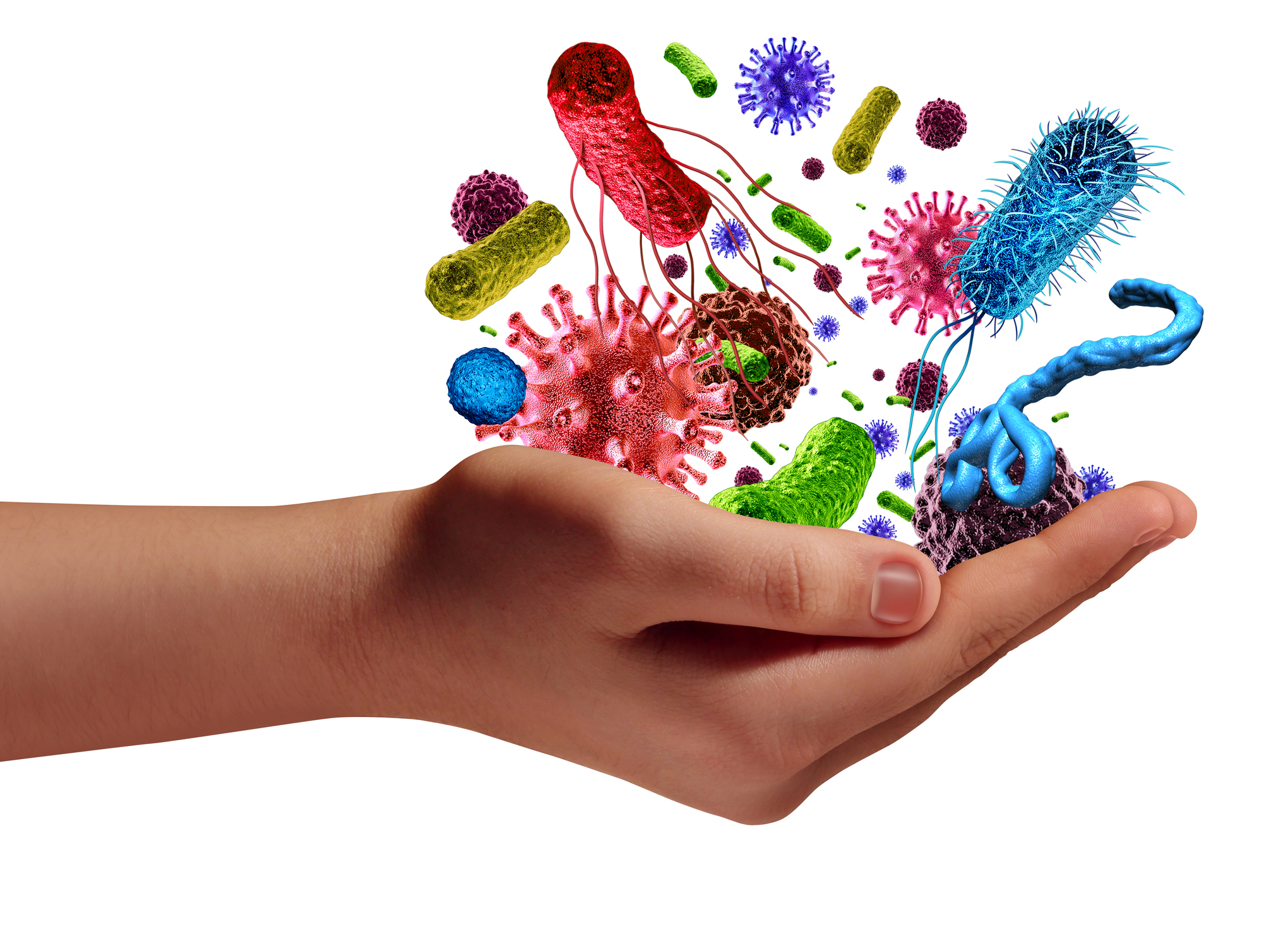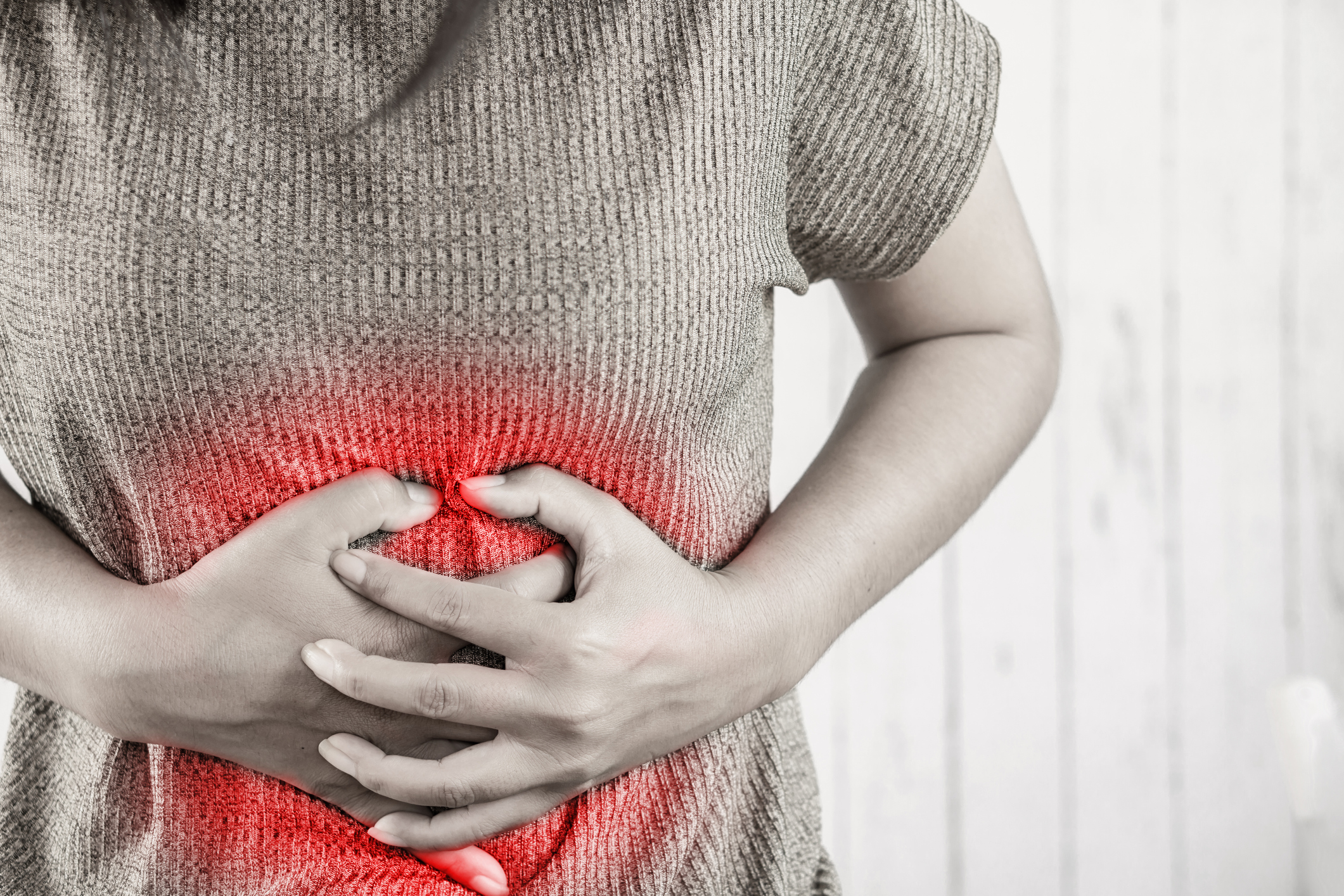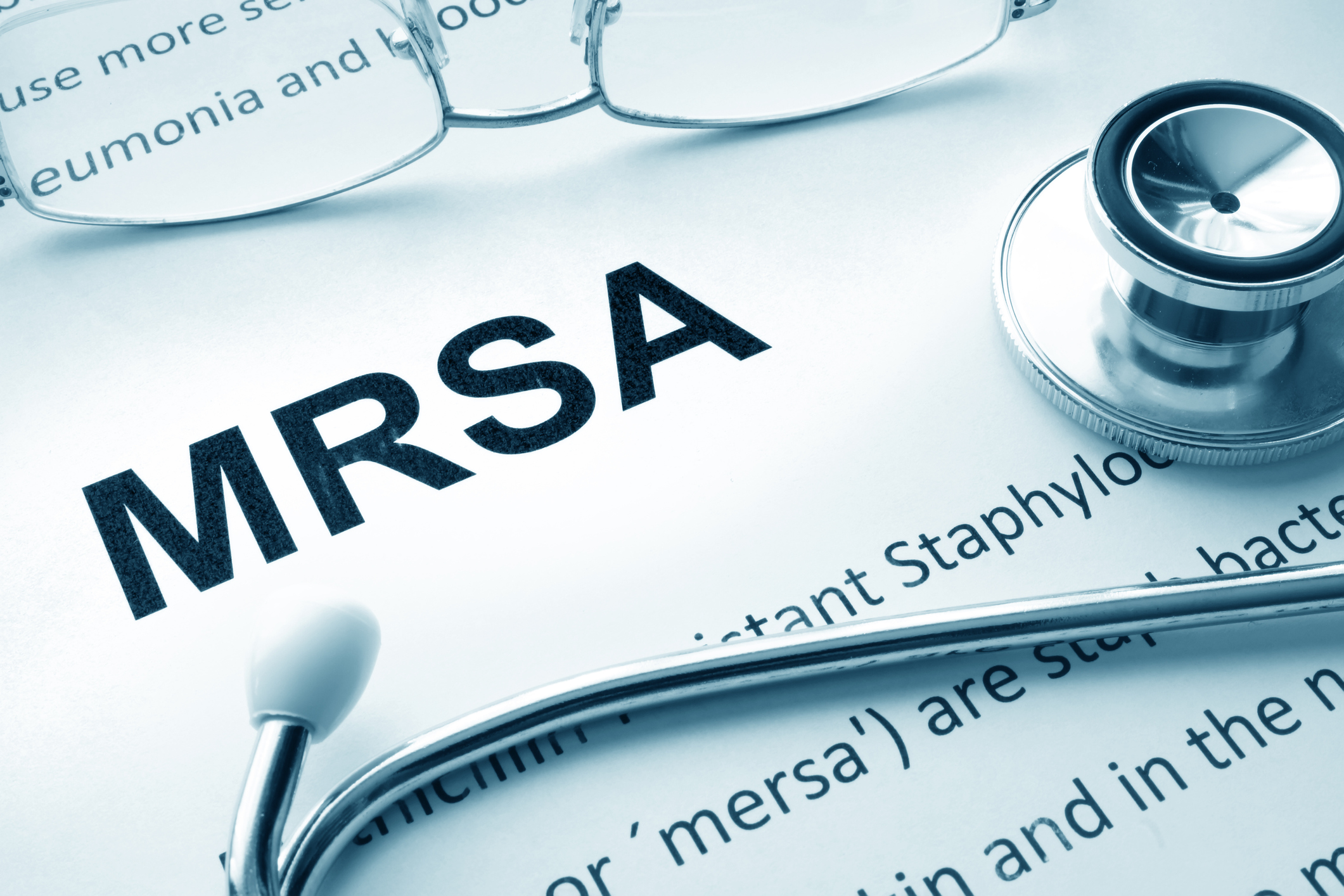- ncbi.nlm.nih.gov - Staphylococcus Aureus, Tracey A. Taylor; Chandrashekhar G. Unakal
- ncbi.nlm.nih.gov - Staphylococcus aureus Infections: Epidemiology, Pathophysiology, Clinical Manifestations, and Management, Steven Y. C. Tong, Joshua S. Davis, Emily Eichenberger, Thomas L. Holland, Vance G. Fowler, Jr
- ncbi.nlm.nih.gov - Medical Microbiology. 4th edition, Baron S
- pubmed.ncbi.nlm.nih.gov - Staphylococcus aureus: the current state of disease, pathophysiology and strategies for prevention, Gustavo H Dayan, Naglaa Mohamed, Ingrid L Scully, David Cooper, Elizabeth Begier, Joseph Eiden, Kathrin U Jansen, Alejandra Gurtman, Annaliesa S Anderson
- ncbi.nlm.nih.gov - Pathogenicity and virulence of Staphylococcus aureus, Gordon Y. C. Cheung, Justin S. Bae, Michael Otto
- ncbi.nlm.nih.gov - Methicillin-resistant Staphylococcus aureus: an overview of basic and clinical research, Nicholas A. Turner, Batu K. Sharma-Kuinkel, Stacey A. Maskarinec, Emily M. Eichenberger, Pratik P. Shah, Manuela Carugati, Thomas L. Holland, and Vance G. Fowler
- nature.com - Methicillin-resistant Staphylococcus aureus, Andie S. Lee, Hermínia de Lencastre, Javier Garau, Jan Kluytmans, Surbhi Malhotra-Kumar, Andreas Peschel, Stephan Harbarth
- solen.cz - METICILIN RESISTANT STAPHYLOCOCCUS AUREUS, Bc. Vladislava Šenkýřová
Golden staph: What is it, transmission, symptoms and treatment. How to protect yourself?

For many years, it has been the most common cause of bacterial infections. It occurs not only in the hospital setting, but also when it spreads among people in the community. It is rightly described as the most successful pathogen of modern times. We are talking about golden staphylococcus. Do you know what it is?
Article content
- Golden staphylococcus from the genus Staphylococcus
- When is golden staphylococcus harmless?
- The development and spread of staphylococcal infection
- What is the danger of golden staph?
- Risk groups for staphylococcal infection
- Golden staph can also be found in food
- Diseases caused by golden staphylococcus aureus and their symptoms
- What is the treatment for infections caused by golden staph?
- How can we protect ourselves from staph infection?
Golden staphylococcus from the genus Staphylococcus
Golden staph is the common vernacular name for the bacterium Staphylococcus aureus from the relatively abundant genus Staphylococcus.
We are talking about pathogenic bacteria. They are the causative agents of a number of infectious diseases in humans and animals.
It is important to mention that this type of bacteria is commonly found on the skin or mucous membranes of the nasal cavity in healthy people and does not cause any health problems.
Complications arise when the bacterium gets from the surface of the body to the inside. This leads to the development of sometimes life-threatening infectious diseases.
The genus Staphylococcus includes several dozen species of bacteria. The most clinically important is the golden staphylococcus.
Other representatives of this bacterial family include S. epidermidis, S. haemolyticus or S. intermedius. These are the causative agents of infections of the skin, urinary tract or other internal organs and tissues.
In terms of further specification, staphylococci are Gram-positive bacteria with a spherical shape ('coccus'). They tend to cluster into a grape-like shape. Hence their name 'staphylococcus', a Greek word meaning grape.
They are able to exist and grow in the presence or absence of oxygen. Golden staphylococcus colonies differ from other staphylococcus species in that they are golden yellow in colour.
When is golden staphylococcus harmless?
The most common reservoir of golden staphylococcus is the human body.
It is mainly found on the skin, in the nose, oral cavity and throat, in the genital and rectal area or in the armpits.
It prefers moist and also hairy environments.
The presence of golden staphylococcus aureus in humans is natural. It colonises superficial parts of the body even without signs of infection and is usually harmless.
Therefore, we are often unaware of its presence on the surface of the body.
In some people the bacterium may be present only transiently, in others for quite a long time (weeks to months). It may be present continuously or not at all.
Golden staphylococcus is present in up to almost half of the adult population. About 15% of the population is a long-term carrier.
Some population groups have a higher prevalence (up to 80%).
These include, for example, healthcare workers, hospitalised patients, patients undergoing haemodialysis, people with weakened immune systems or people who regularly inject drugs with needles (diabetics).
Whether a person develops a more serious infection in the presence of golden staphylococcus depends on both the overall immunity of the body and the specific site infected by the bacterium.

The development and spread of staphylococcal infection
The source of infection is usually a person. It is either a carrier of the bacterium (called a healthy carrier) or a person with a pre-existing infectious lesion.
There are two routes of transmission of the bacterium - direct and indirect. Direct infection occurs by direct contact with the infectious lesion or by the droplet route (via sputum and saliva when sneezing or coughing).
The indirect route is through touching contaminated objects with the hands, with subsequent transmission of the bacteria to the mouth or nose, but also through clothing, towels, bed linen, sports equipment or medical instruments.
When can the infection itself occur?
1. Weakening of the immune system
A staph infection most often occurs when the body is already colonized with staphylococcal bacteria.
If golden staphylococcus is present on the surface of the body, there is a higher risk of infection. This is true even if its presence is asymptomatic.
Infections occur when the immune system is weakened and the bacteria multiply significantly on the surface of the skin or mucous membranes.
2. Penetration into the body's internal environment
The primary barrier to bacterial entry into the internal environment of the body is the superficial layers of the skin and mucous membranes.
Any damage to the skin or mucous membranes, such as trauma, injury or surgery, poses a risk of penetration of staphylococcus from the surface into deeper tissues.
Local infection may follow. If the bacterium enters the bloodstream, it can reach other places in the body.
Combined with a weakened immune system, systemic staphylococcal infections pose a great danger.
3. Infections in the hospital environment
In this case, infection occurs through infected medical work tools that are used daily in healthcare facilities.
In addition, transmission from other infected persons and patients occurs in this environment. Infection can occur in an environment with inadequate sanitation in common areas.
And also through healthcare personnel who may be transient carriers of the bacteria or "just" carriers from other patients.
Infections acquired in a hospital setting are called nosocomial infections.
Another specific way in which infection with golden staphylococcus can occur is when medical devices are placed inside the body. This can occur, for example, when implants, artificial joints or heart valves, catheters, tubes, etc. are inserted.
Bacteria have an excellent ability to adhere to the surface of plastic or metal materials and form a resistant biofilm on them. Lack of disinfection and control of the surface of the devices is subsequently a source of infection.
4. Other routes of infection
Rarely, infectious disease can also be transmitted from animals, specifically livestock.
What is the danger of golden staph?
Golden staph is a pathogenic bacterium. Its presence in the human body triggers an immune response, i.e. the body defends itself against it.
In order to resist the host's immune response and cause infection, the staphylococcus produces a number of pathogenic factors. These help it to evade the immune response and promote the spread of the bacterium to other parts of the body.
Pathogenic factors include proteins, enzymes, substances that allow the bacterium to adhere to host cells, and last but not least, toxins.
These include, for example, polysaccharides and peptides (peptidoglycan). They are part of the cell wall of the golden staphylococcus aureus, perform a defensive function against the host immune system, promote colonisation and persistence of the bacterium on the host cell surface or also provide nutrition to the bacterium.
Enzymes such as proteases, lipases or hyaluronidases are responsible for damaging host tissues. They promote the spread of infection and provide nutrition to the bacterium.
The danger of golden staph is that it can also produce various types of toxins. These usually cause the symptoms of the infection itself and cause the infected host cells to break down.
These include α-toxin, β-toxin, γ-toxin (also known as haemolysin) and leukocidin, which cause skin infections and the breakdown of white and red blood cells.
In addition, enterotoxin, which causes food poisoning, toxic shock syndrome toxin (TSSI-1), which by name is the cause of toxic shock syndrome, and exfoliating toxins, which cause severe skin infections characterised by blistering and peeling of the skin.
Risk groups for staphylococcal infection
Infection with golden staphylococcus can occur in all people regardless of age or sex.
However, there are groups of people who are at slightly higher risk of developing the infection than others.
These groups are:
- Children (especially in the first year of life)
- Older people
- Athletes, soldiers or prisoners
- People working with livestock
- Staff of health care facilities
- Hospitalized patients, patients after surgery or with implanted devices
- Patients with white blood cell disorders
- Patients with diabetes
- People with high levels of iron in the body
- Patients undergoing haemodialysis
- People infected with HIV or cystic fibrosis
- People who regularly inject medications or drugs
- Breastfeeding mothers (transmission of infection from the baby's saliva)
- Some studies also list men and black people as a higher risk group
Golden staph can also be found in food
Infection with golden staphylococcus can also come from food. These are foods that have been heavily contaminated and contain staphylococcus-produced toxins.
Consumption of such foods leads to food poisoning, which manifests itself in digestive problems - nausea, vomiting, diarrhoea, abdominal cramps.
The problems occur within a few hours, are mild in nature and usually persist for two to three days. They subside on their own, even without the need for medical attention.
When digestive problems occur, care should be taken to drink enough to avoid dehydration.
Golden staph is most commonly found in foods such as meat and meat products, milk and dairy products or eggs. It is also very tolerant of salted foods (it is also found on sausages).
A greater risk than the presence of staphylococcus in food is the toxins it produces.
These toxins are very resistant to heat and require sufficiently long and precise cooking of the food to destroy them.
So how do you prevent staphylococcus infection from food?
- Eat cooked or sufficiently cooked foods.
- Avoid unpasteurised milk and dairy products.
- Wash your hands thoroughly before cooking, serving or eating food.
- Keep surfaces on which food is prepared clean.
- Ensure proper storage of food.

Diseases caused by golden staphylococcus aureus and their symptoms
Golden staph is the causative agent of a really wide range of infectious diseases. We are talking about local but also systemic infections. These can occur in different places in the body.
The most common infections affect the skin, soft tissues, bones and joints.
Infections occurring locally can spread to other parts of the body once the bacteria have entered the bloodstream. They can also infect tissues and organs further away from the focus of infection or can infect several sites simultaneously.
The spread of local infection to the internal environment of the body is generally referred to as bacteraemia.
Depending on the site of infection and the extent of the spread of the bacterium, these can be benign conditions or life-threatening infectious diseases.
Skin infections
Of the infections caused by golden staphylococcus, skin infections are the most common.
They occur anywhere on the body, including the face and around the nose or mouth.
They are manifested by the appearance of rashes, boils or blisters. These may contain pus or ooze fluid. Some form crusts on the skin after drying.
The infected lesion or surrounding area is red, swollen, itchy or painful. In more severe cases, open sores or fever appear on the skin.
Typical examples of staphylococcal skin infections include abscesses, impetigo, cellulitis as inflammation of the deeper layers of the skin, folliculitis as inflammation of the tissue surrounding the hair shaft, or staphylococcal skin scald syndrome, so-called SSSS.
Skin infections most often affect newborns, infants or young children. This is due to underdeveloped immunity and defences against the bacteria and its toxins.
Inflammation of the mammary gland
Inflammation of the mammary gland, professionally called mastitis, can occur in breastfeeding women after transmission of a staphylococcal infection from a breastfed baby through saliva.
It is manifested by pain, redness and swelling in the breast area or the formation of abscesses.
Infection of the bones and joints
The golden staphylococcus bacterium also infects the bones and joints. It causes inflammation of the bone marrow or infectious arthritis.
It mainly affects the knees, shoulder joints, hips, fingers and thumbs. It is characterised by swelling, severe pain and fever.
Infection of the lungs
Gold staphylococcus aureus is a very common cause of pneumonia. Inflammation can occur after inhalation of the bacterium through the respiratory tract. In some cases, the bacterium enters from the bloodstream.
Staphylococcal pneumonia occurs mainly in patients hospitalized in medical institutions, long-term patients or children.
It presents with fever, chills, sweating, fatigue, inappetence, productive cough with green-coloured mucus and chest pain (especially when coughing).
Heart infection
In this case, we are talking about staphylococcal endocarditis. It is an inflammatory disease of the inner lining of the heart. The inflammation spreads to the heart valves.
Typical symptoms include fever, a general feeling of weakness and changes in heart rhythm.
It is most common in the elderly, hospitalized patients and patients with artificial valves.
Infection can also occur in the heart through implanted cardiac support devices, artificial valves or intravenous catheters.
Sepsis
Sepsis is a serious infection that occurs when bacteria enter the bloodstream. It is also called blood poisoning.
It results from an exaggerated and uncontrolled reaction of the immune system to the presence of bacteria in the body.
A strong inflammatory reaction leads to severe damage to the overall functioning of internal systems. It is often fatal (up to 40-60% of cases).
Risk factors for sepsis are mainly advanced age, a weakened immune system or invasive procedures.
Toxic shock syndrome
This is a relatively rare condition, but it is dangerous and in some cases life-threatening.
Similar to food poisoning, this syndrome is caused by toxins produced by golden staphylococcus.
In addition to golden staphylococcus, another type of bacteria, streptococcus, can cause toxic shock syndrome.
Toxic shock syndrome occurs as a reaction of the immune system to the presence of these toxins. This inflammatory reaction is sudden and very intense.
There is a sudden onset of symptoms such as fever, skin manifestations (redness or rash), low blood pressure, nausea, vomiting, diarrhoea and muscle pain.
The function of several internal organs (liver, kidneys, nervous system) is impaired, or in the worst case, failure.
Awareness of this syndrome began to increase only a few decades ago. Since about 1980, doctors have encountered this condition more and more frequently, thanks, among other things, to the massive growth of the market for menstrual absorbent tampons.
Menstruating women using absorbent tampons were the largest group to experience this syndrome.
It is important that women change their sanitary products regularly during menstruation and, last but not least, maintain good hygiene.
Toxic shock syndrome associated with menstrual tampons is caused by the presence and accumulation of golden Staphylococcus aureus bacteria in the vagina and around the cervix. In addition, there are other causes of its occurrence.
One of them is the occurrence of the syndrome in pre-existing cutaneous staphylococcal infections, from which the bacteria spread to the internal environment of the organism. Also, it is caused by surgical interventions or even childbirth.
Other infections
In rare cases, golden staphylococcus can be the cause of, for example, meningitis, urinary tract inflammation or inflammation of the veins.
Injected breast implants can also be a risk factor for staph infection.

What is the treatment for infections caused by golden staph?
The treatment of infections caused by golden staph is very individual. It always depends on the condition of the individual patient.
In general, treatment follows the following key steps:
- Assessing whether the infection is complicated or uncomplicated.
- Identification and removal of the focus of infection
- Initiation of appropriate antibiotic treatment
Several types of antibiotics are used. The choice depends primarily on the strain of bacteria present and the extent and intensity of the infection.
Most commonly used are penicillins, glycopeptides, aminoglycosides, celphalosporins and lincosamides.
The method of administration of antibiotics is mainly oral (by mouth). In more severe cases, they are administered intravenously.
Other types of therapy for staphylococcal infections include topical therapy. This is used for skin infections. It uses topical antibiotics (creams, gels, patches, etc.) or preparations containing silver.
Antibiotics applied directly at the site of infection are often more effective than treatment with systemic antibiotics alone.
Surgical treatment is resorted to in the case of infection arising in connection with implanted devices such as catheters, breast implants, artificial heart valves.
This may involve the insertion of drainage devices to remove accumulated fluid or air from the site of infection. In more severe infections, these devices must be removed from the body completely.
Surgery is also used for some skin infections. In this case, the affected areas are drained or incised to remove pus (for example, abscesses).
There is currently no effective vaccine to prevent staph infections.
A major complication of antibiotic treatment for golden staph infections is its resistance to certain types of antibiotics.
Antibiotic resistance or MRSA
Methicillin-resistant golden staphylococcus aureus (known as MRSA) is one of the strains of golden staphylococcus that is characterized by resistance to commonly used antibiotics.
This feature poses a major problem in terms of the difficulty of treatment, the limited choice of effective antibiotics, but also in terms of the economic cost of treatment.
The concept of resistance means that the antibiotic is unable to kill the bacterium. This is because the bacterium has developed certain mechanisms by which it can defend itself (e.g. it has the ability to cleave or has less adhesion to the drug molecule).
The main risk of MRSA is that even initially small local infections can develop into large-scale, serious infections that affect the internal environment of the body. Ultimately, they are life-threatening.
Methicillin-resistant golden staphylococcus aureus is also referred to as a "superbug".
The occurrence of MRSA is usually associated with the hospital environment. In this case, we are talking about nosocomial infection. It is transmitted through healthcare personnel, between patients, but also during invasive examination or treatment procedures.
However, transmission can also occur in a community setting.
Combinations of several antibiotics are very often used in the treatment of MRSA infections, both to increase bactericidal activity but also to reduce the risk of bacterial resistance.
Read also our articles:
- Antibiotic resistance: why take them exactly and as prescribed by your doctor?
- Over-the-counter antibiotics - can we find them in the pharmacy?

How can we protect ourselves from staph infection?
We can reduce the risk of contracting and developing an infection to some extent by following a few simple measures, applicable not only in the home environment:
- Regular hand and body washing.
- In the case of wounds on the skin, keep these wounds clean, disinfected and, if necessary, covered.
- Change menstrual hygiene products regularly.
- Avoid sharing towels and personal hygiene items.
- Keep your home clean, wash towels, bed linen etc. regularly.
- Ensure adequate preparation and proper storage of food.
- Do not touch infected lesions on other persons.
Prevention and treatment of infections caused by golden staphylococcus aureus can also be supported by natural means, using natural substances with antibiotic properties.
We are talking, for example, about garlic, turmeric, ginger, honey, echinacea or essential oils (tea tree, basil).
Antibacterial activity against MRSA has also been demonstrated in vitro, for example:
- Acorus calamus
- White horsetail (Lawsonia inermis)
- Pomegranate (Punica granatum)
- Emblica officinalis
- Some species of trees of the genus Terminalia (Terminalia chebula and Terminalia belerica)
Interesting resources
Related










